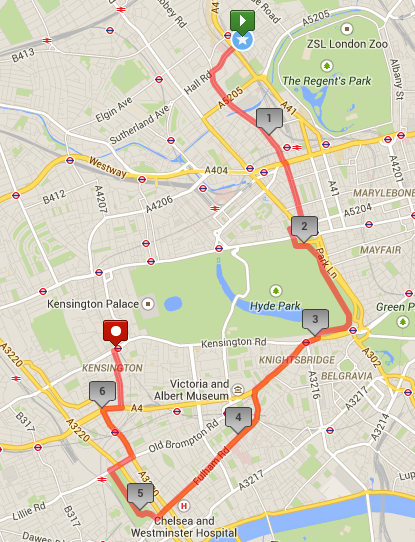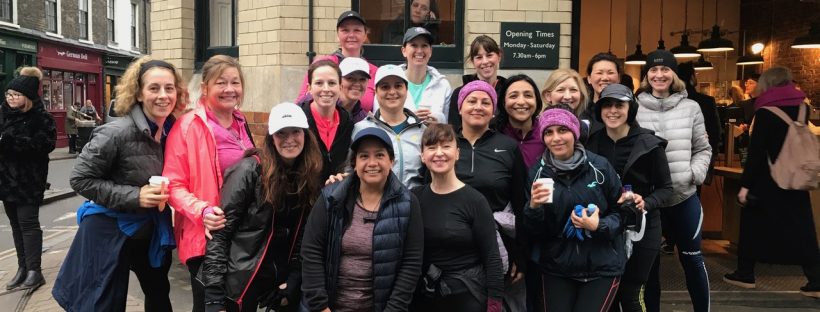Well done on running 70 minutes on Thursday! You may not believe us, but the hardest part is behind you. Once someone can run an hour, bumping up a session 10 minutes each week is not a significant jump in terms of fitness/cardio requirement. The hard part is learning how to run and building a base. It’s tough to move from walking/jogging intervals to non-stop running. We’ve done that hard work and are more than ready to start extending our mileage.
A few notes about training over the coming weeks:
- It’s very important to get in the the long runs each week, even if they are not on Thursday with the rest of the group
- It’s important to not steadily increase your time every week – it is best to lengthen your session for 3-4 weeks then drop back for one week to allow your body to recover/rest. We will rest in three weeks and then again the week of ASL’s February break.
- Please continue to email/talk to each other when you have scheduling conflicts – it’s a great way to get those longer runs in if you can’t make a Thursday
Today’s lecture – why we run slowly. This is from Paula Mitchell, our founder.
Why do we run the long run slower than race pace?
The quick answer is that it has to do with how your body builds fuel, which is something you’ll need for the race! I’ll delve into the basic science of fueling (which I have hugely over-simplified but hopefully it’ll get my point across). To fuel our runs we have 3 options – Creatine Phosphate (CP), glycogen and fat.
Creatine Phosphate– You have about 15 seconds worth of CP fuel – that’s it. Think Usain Bolt running the 100m – he fuels with CP and it works because he can run 100m in less than 15 seconds. CP is where your body will go first looking for fuel, particularly if you take off like a rocket from Barclays. Think of CP as kindling on a fire – it catches fire easily but burns out very quickly.
Glycogen– Glycogen is the next fuel option. Glycogen is basically stored in your muscles and in your liver and because of that it makes glycogen a bit more difficult to burn as fuel (think of damp firewood – it will eventually burn but it takes quite a bit to get it going).
Fat– Fat is the 3rd source of fuel and most runners, even the very lean women, have an ample supply of it. Think of fat as a butane tank of gas on the BBQ grill – once it’s lit, you can have countless cook-outs before the fuel is gone.
Here’s the important part– All of those fuel sources – kindling, damp firewood or butane gas need something to ignite them and keep them burning. Physiologically speaking that ignition or burning “tool” is ATP which is created by mitochondria; so, the more mitochondria you have the more efficient you are as a fuel burning machine.
What is mitochondria and how do we get more of it? Some of us are genetically blessed with higher mitochondria counts. Thank your mother for that – it comes through the maternal side of the genetic equation. If you didn’t win the genetic lottery, then the only way you can increase mitochondria is through LONG, SLOW, ENDURANCE training (LSE). When you go for a long run at a slow pace, you actually produce mitochondria. Kind of cool, huh? Now remember – we need mitochondria to help ignite our fuel sources. So what does that mean for you? It means SLOW DOWN on your long run – give your body a chance to become a mitochondria production factory. If you do your long run at a strong pace, you’re missing out on this benefit.
So we will be keeping it SLOW on Thursdays, and now you know why.
Unfortunately, I won’t be running with you all this week (I am so bummed to miss this great route!). I’m going on a 2 day girls’ trip to Paris. I can’t wait to hear about the run.
Route this week
This week we are running an interesting route through the Brompton Cemetery to finish at Whole Foods in Kensington. We’ll head down to Hyde Park in the normal fashion via Lisson Grove/Seymour. As we near Wellington Arch, we’ll veer to the right (or west) staying along the inside edge of the park. exiting at the gate we normally use at William Street [next to the French Embassy]. Cross the street, take a right. Turn left at Brompton Road (just past the tube) and take Brompton all the way (admiring Harrods as you pass) until Fulham Road. Veer left on Fulham Road and continue to Brompton Cemetery. Turn right to enter the Cemetery. Run through the Cemetery then exit and turn right onto Old Brompton Road, then turn left onto Earls Court Road. Cross Cromwell Road, then turn right onto Cromwell Road and then turn left onto Marloes Road. Continue north on Marloes making your way through the streets to Kensington High Street. Whole Foods will be to your right. Whole Foods is a great place to finish. There is plenty of room for everyone to sit together for coffee after the run (if you have time). To get back to SJW, some people may decide to share cabs or you can tube home from Kensington High Street station (Circle Line).

